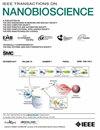Multi-Disease Detection Using a Prism-Based Surface Plasmon Resonance Sensor: A TMM and FEM Approach
IF 3.7
4区 生物学
Q1 BIOCHEMICAL RESEARCH METHODS
引用次数: 0
Abstract
This research introduces a surface plasmon resonance (SPR)-based biosensor with multilayered structures for telecommunication wavelength in order to detect multiple diseases. The malaria and the chikungunya viruses are taken into account and the presence of these viruses are determined by examining several blood components in healthy and affected phases. Here, two distinct configurations (Al-BTO-Al-MoS2 and Cu-BTO-Cu-MoS2) are proposed and contrasted for the detection of numerous viruses. The performance characteristics of this work have been analyzed using Transfer Matrix Method (TMM) method and Finite Element Method (FEM) method under angle interrogation technique. From the TMM and FEM solutions, it is evident that the Al-BTO-Al-MoS2 structure provides the highest sensitivities of ~270 deg./RIU for malaria and ~262 deg./RIU for chikungunya viruses, with satisfactory detection accuracy of ~1.10 for malaria, ~1.64 for chikungunya, and quality factor of ~204.40 for malaria, ~208.20 for chikungunya. In addition, the Cu-BTO-Cu MoS2 structure offers the highest sensitivities of ~310 deg./RIU for malaria and ~298 deg./RIU for chikungunya, with satisfactory detection accuracy of ~0.40 for malaria, ~0.58 for chikungunya, and quality factor of ~89.85 for malaria, ~86.38 for chikungunya viruses. Therefore, the performance of the proposed sensors is analyzed using two distinct methods and gives around similar results. In a sum, this research could be utilized as a theoretical foundation and first step in the development of a real sensor.使用棱镜式表面等离子体共振传感器检测多种疾病:TMM 和有限元方法
本研究介绍了一种基于表面等离子体共振(SPR)的生物传感器,该传感器具有多层结构,可用于电信波长,以检测多种疾病。研究考虑了疟疾和基孔肯雅病毒,并通过检测健康和患病阶段的几种血液成分来确定这些病毒的存在。这里提出了两种不同的配置(Al-BTO-Al-MoS2 和 Cu-BTO-Cu-MoS2),并进行了对比,以检测多种病毒。在角度检测技术下,采用传递矩阵法(TMM)和有限元法(FEM)分析了这项工作的性能特征。从 TMM 法和有限元法的求解结果可以看出,Al-BTO-Al-MoS2 结构对疟疾病毒和基孔肯雅病毒的灵敏度最高,分别为 ~270 deg./RIU 和 ~262 deg./RIU ;对疟疾病毒和基孔肯雅病毒的检测精度分别为 ~1.10 和 ~1.64 ;对疟疾病毒和基孔肯雅病毒的品质因数分别为 ~204.40 和 ~208.20 。此外,Cu-BTO-Cu MoS2 结构对疟疾和基孔肯雅病毒的灵敏度最高,分别为 ~310 deg./RIU 和 ~298 deg./RIU ;检测精度令人满意,对疟疾为 ~0.40 ,对基孔肯雅病毒为 ~0.58 ;质量因子对疟疾为 ~89.85 ,对基孔肯雅病毒为 ~86.38 。因此,使用两种不同的方法分析了拟议传感器的性能,结果大致相似。总之,这项研究可作为开发实际传感器的理论基础和第一步。
本文章由计算机程序翻译,如有差异,请以英文原文为准。
求助全文
约1分钟内获得全文
求助全文
来源期刊

IEEE Transactions on NanoBioscience
工程技术-纳米科技
CiteScore
7.00
自引率
5.10%
发文量
197
审稿时长
>12 weeks
期刊介绍:
The IEEE Transactions on NanoBioscience reports on original, innovative and interdisciplinary work on all aspects of molecular systems, cellular systems, and tissues (including molecular electronics). Topics covered in the journal focus on a broad spectrum of aspects, both on foundations and on applications. Specifically, methods and techniques, experimental aspects, design and implementation, instrumentation and laboratory equipment, clinical aspects, hardware and software data acquisition and analysis and computer based modelling are covered (based on traditional or high performance computing - parallel computers or computer networks).
 求助内容:
求助内容: 应助结果提醒方式:
应助结果提醒方式:


